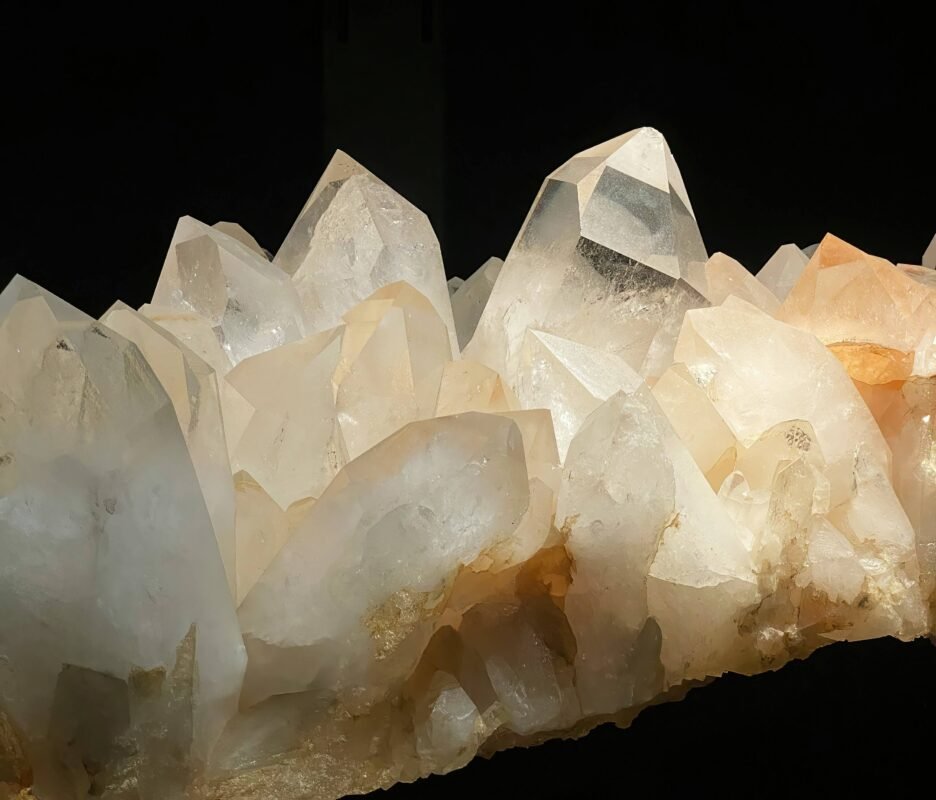Crystals have captivated humans for centuries with their dazzling beauty and spiritual significance. Whether you’re a collector, a hobbyist, or a business owner sourcing from a wholesale shop, understanding how to identify crystals is essential. This comprehensive guide explores techniques, tools, and tips for identifying crystals accurately. Let’s dive in!
Why Learn to Identify Crystals?
Identifying crystals goes beyond aesthetics; it’s about understanding their properties, origins, and uses. Here are some key reasons to master this skill:

- Value Assessment: Knowing the identity of a crystal helps determine its market value, especially if purchasing from a wholesale shop.
- Spiritual and Healing Uses: Different crystals are believed to have unique energy properties, making accurate identification essential for practitioners.
- Collecting and Resale: Proper identification ensures authenticity, which is critical for collectors and sellers.
Key Characteristics to Identify Crystals
1. Color and Transparency
One of the first things you’ll notice about a crystal is its color. However, relying solely on color can be misleading as some crystals have similar hues. Transparency also plays a role:
- Transparent: Quartz, Amethyst
- Translucent: Rose Quartz, Fluorite
- Opaque: Turquoise, Malachite
| Crystal Name | Color | Transparency |
|---|---|---|
| Amethyst | Purple | Transparent |
| Rose Quartz | Pink | Translucent |
| Turquoise | Blue-Green | Opaque |
2. Hardness
The Mohs Hardness Scale is a critical tool for identifying crystals. It measures a crystal’s resistance to scratching:
- Soft Crystals (1-3): Talc, Gypsum
- Medium Crystals (4-6): Fluorite, Apatite
- Hard Crystals (7-10): Quartz, Diamond
Perform a scratch test by rubbing the crystal against a known substance or using a hardness kit.
3. Luster
Luster describes how a crystal reflects light. Common types include:
- Vitreous: Quartz, Tourmaline
- Metallic: Pyrite, Hematite
- Pearly: Moonstone
4. Crystal Structure
Crystals grow in distinct geometric patterns. Identifying the crystal system can narrow down options:
- Cubic: Pyrite, Fluorite
- Hexagonal: Quartz, Beryl
- Trigonal: Amethyst, Calcite
5. Streak Test
The streak test involves scraping the crystal against an unglazed porcelain plate to observe its powdered color. For instance:
- Hematite: Red-brown streak
- Pyrite: Greenish-black streak
Tools for Identifying Crystals
Using the right tools can significantly enhance your ability to identify crystals. Here are some essentials:
- Magnifying Glass or Loupe Examine surface features like inclusions, fractures, and clarity.
- Hardness Test Kit Includes tools to measure the Mohs hardness of your crystal.
- UV Light Some crystals fluoresce under UV light, such as Fluorite and Calcite.
- Digital Scale Weighing crystals can help estimate their density.
- Field Guide or App Comprehensive guides or identification apps can provide additional reference materials.
Commonly Confused Crystals and How to Differentiate Them
| Crystal 1 | Crystal 2 | Key Differences |
| Quartz | Glass | Quartz has natural inclusions; glass is uniform. |
| Citrine | Yellow Topaz | Citrine is lighter; Topaz has a higher hardness. |
| Jade (Jadeite) | Serpentine | Jade is denser and has a waxy luster. |
Identifying Crystals in a Wholesale Shop
If you’re sourcing crystals from a wholesale shop, here are some tips to ensure you’re getting authentic, high-quality products:
1. Ask for Certification
Reputable wholesalers often provide certificates of authenticity or origin for their crystals. Always request this documentation to avoid synthetic or fake products.
2. Inspect in Person
While online purchases are convenient, visiting a physical wholesale shop allows you to:
- Examine the crystal’s luster, color, and weight firsthand.
- Perform simple tests like hardness or streak tests (with permission).
3. Understand Grading Terms
Wholesale shops often grade crystals based on clarity, size, and inclusions. Familiarize yourself with terms like:
- AAA Grade: High clarity and vibrant color
- A Grade: Moderate inclusions but good quality
- B Grade: More inclusions or less vibrant colors
How to Avoid Fake Crystals
The crystal market, especially at the wholesale level, is rife with imitations. Here’s how to spot them:
- Plastic Imitations: Fake crystals made of plastic are lighter and warmer to the touch.
- Dyed Crystals: Look for uneven color distribution, especially in stones like Agate.
- Glass Replicas: These often lack the natural inclusions and irregularities found in real crystals.
Example: Real vs. Fake Amethyst
| Feature | Real Amethyst | Fake Amethyst |
| Color | Deep purple with variations | Uniform, overly bright purple |
| Inclusions | Natural, uneven patterns | None or bubbles (glass) |
Market Insights for Crystals
The global crystal market has been booming, with increasing demand in industries like jewelry, wellness, and home decor. According to a 2023 report:
- The crystal market’s value is projected to reach $12 billion by 2030, growing at a CAGR of 7%.
- Wholesale shops contribute a significant portion, supplying raw and polished crystals to businesses worldwide.
Building Your Crystal Collection
Whether you’re an enthusiast or a business owner, identifying crystals accurately is the cornerstone of building a quality collection. Start by sourcing from reputable wholesale shops that offer a wide variety of crystals, including rare and exotic types.
Conclusion
Learning how to identify crystals is an invaluable skill that enhances your appreciation and understanding of these natural wonders. By mastering key identification techniques and sourcing from trusted wholesale shops, you can ensure the authenticity and quality of your collection. Whether for personal enjoyment or business purposes, the knowledge you gain will serve as a solid foundation in the captivating world of crystals.
Know More:
Crystal Identifier Apple app: https://apps.apple.com/us/app/crystal-rock-identifier/id1553800023
Crystal Identifier Google app: https://play.google.com/store/apps/details?id=com.picturerock.rock&hl=en
Quora: https://www.quora.com/How-do-you-identify-what-crystal-you-have

